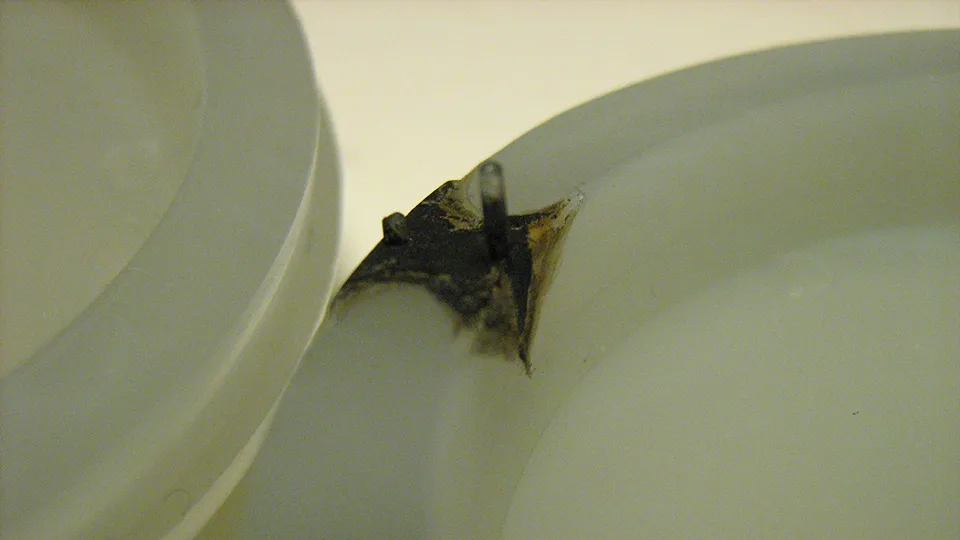Injection molding burn marks are a common defect in the realm of injection molding. These burn marks not only influence the aesthetics of the custom plastic product but also damage the overall final product quality. As a manufacturer of high-quality custom plastic molded products, understanding the causes of burn marks and solving this injection molding defect is important. In the following sections, we discuss the causes and solutions, finding a better way to improve the injection molding process and achieve high-quality custom products.
What are Injection Molding Burn Marks?
In injection molding, burn marks refer to discolorations or darkened areas on the surface of plastic parts. These marks are the result of excessive heating during the molding process, leading to the degradation or burning of the plastic material. The appearance of burn marks can vary, but they often show dark or brownish streaks or spots on the molded part.
The location of burn marks is typically related to the last areas to fill in the mold cavity. These areas are easier to overheat as the molten plastic encounters higher temperatures during the later stages of the injection process. Burn marks usually show up where the plastic fills the mold last, near the gate or end of the flow path.
Causes and Solutions of Injection Molding Burn Marks
The burn marks in injection molding have several possible causes, but they all result from trapped air being rapped in the cavities of the injection mold. If the injection molded parts with this defect, there are 4 common causes.
The Injection Molding Machine Issues
One of the primary causes of burn marks in injection molding is often the machine. The machine-related problems will raise the defect risk. If the burn marks are at the end of the filling part, that means the injection speed or injection pressure is too high. The manufacturer should adjust by lowering the pressure or speed to prevent burning.
If the black streaks are shown in molded parts, usually it is related to the gate size. That means the gate size is improper, usually the size is too small to lead to low resin flow. The manufacturer should reevaluate and adjust the gate size position to avoid burn streaks.
Click here to learn the injection molding gate design guide.
Except for the gate size issue, the black streaks in molded parts are also related to nozzle size. If the nozzle size is too small, causing slow melt flow, also causes burn marks. The manufacturer should open the nozzle orifice to ensure proper resin flow.
If the molded parts are shown with black specks or color striation. That means the screw and barrel need cleaning, repair, or replace a new one. Maintenance on the screw and barrel will solve the burn marks issues.
Improper Injection Molding Process conditions
Material Temperature: Excessive material temperature will also cause burn marks on plastic molded parts. Reducing the melt temperature by various methods will improve the burn marks issues.
Injection Speed: Too quick injection speed will also cause burn marks. Appropriate lower injection speed will improve this defect.
Back pressure: Excessive back pressure will also cause burn marks. The manufacturer should adjust the back pressure depending on the part design and materials to prevent burn marks.
Click here to have an overview of injection molding back pressure.
Injection Mold Cause
If the burn marks are not caused by the injection molding machine, we should check about the injection mold. The mold’s construction and conditions play an important role in influencing venting and resin flow. A poorly manufactured injection mold can cause burn marks.
Burn Marks Near the End of the Fill:
That means the mold with improper venting. Then the manufacturer should slow down the injection rate to enhance venting as resin flows and cools.
Burn Marks on the Mold or Mold Destruction:
That means trapped air in injection cavities, potentially due to improper design or construction. Consider redesigning the mold or introducing additional vents to address the air entrapment issue.
Plastic Material Cause
Understanding how different plastics respond to heat is important in addressing the risk of burn marks in injection molding. By your plastic choices based on their heat response and adding suitable additives, you can reduce the risk of burn marks during the injection molding process. This strategic approach ensures a harmonious balance between material properties and manufacturing conditions, contributing to the production of flawless molded products.
Conclusion
For plastic injection molding, burn marks are the common injection molding defects. so solving burn marks is important. From injection molding machines to mold designs and material selection, every detail matters. By referring to the guide above, you can analyze the cause of burn marks and keep them from occurring and affecting the final production quality of your product.
Burn marks can appear at any time during the injection molding process. You need to with a professional plastic injection molding manufacturer. An experienced manufacturer can solve burn marks and other common injection molding defects. They can improve the molded parts’ quality.
Except for injection molding burn marks, in previous blogs, we also introduced some other common plastic injection molding defects causes and solutions. Such as warpage, stress marks, sink marks, flashes, color unevenness, etc. Welcome to click and read.




